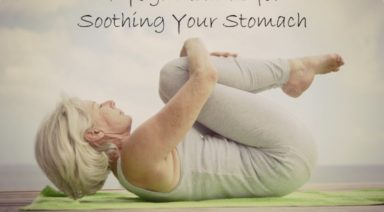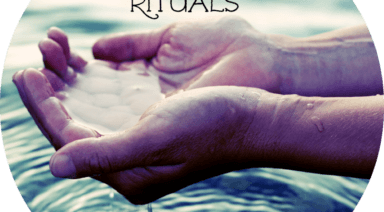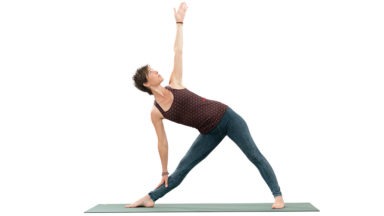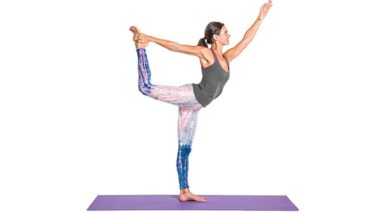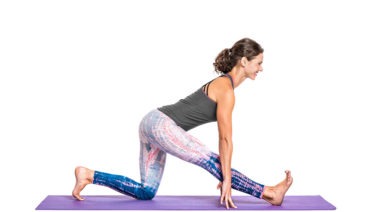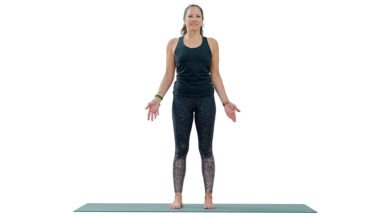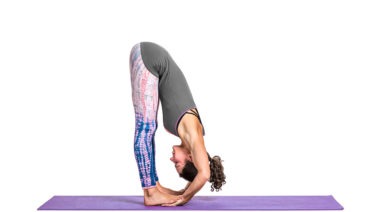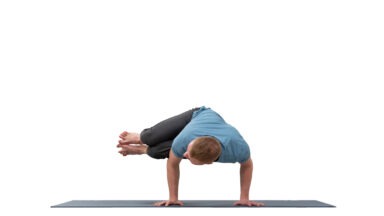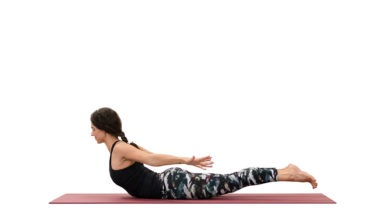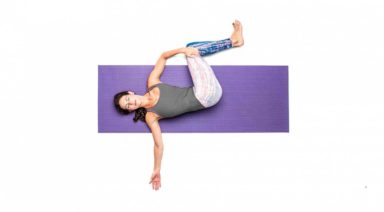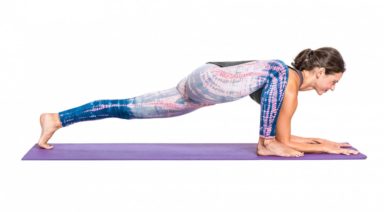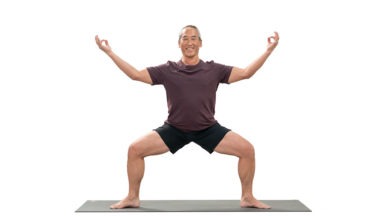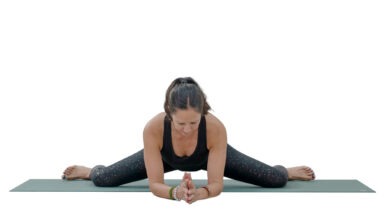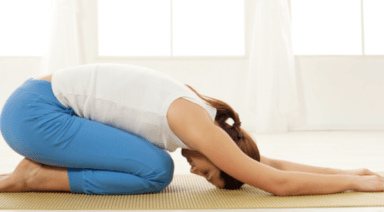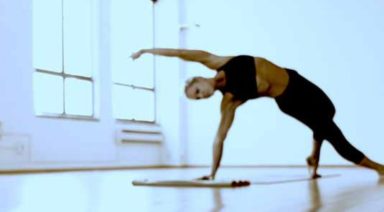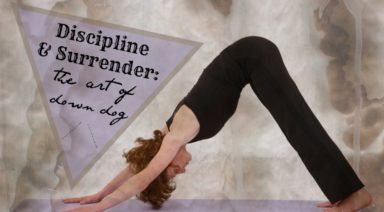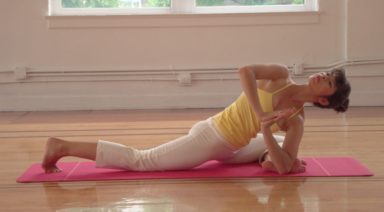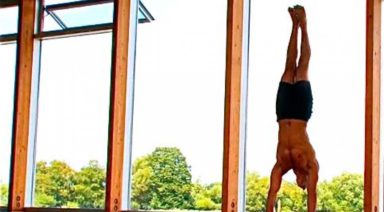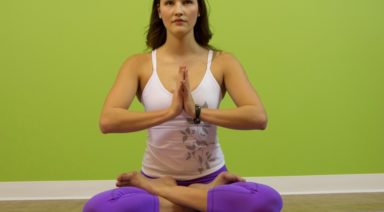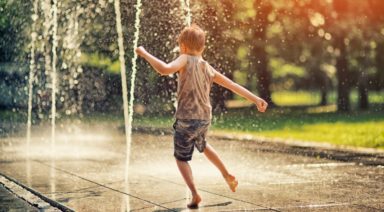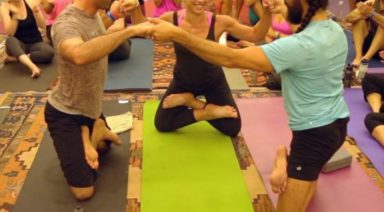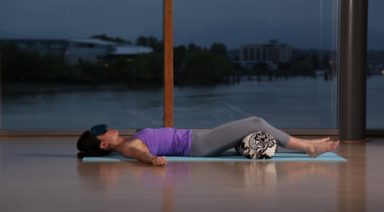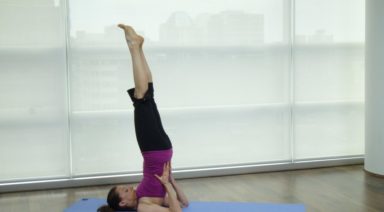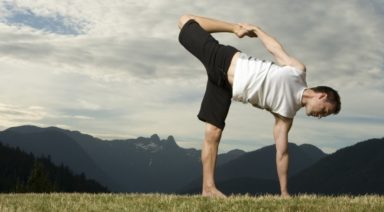Reducing Shoulder Impingement
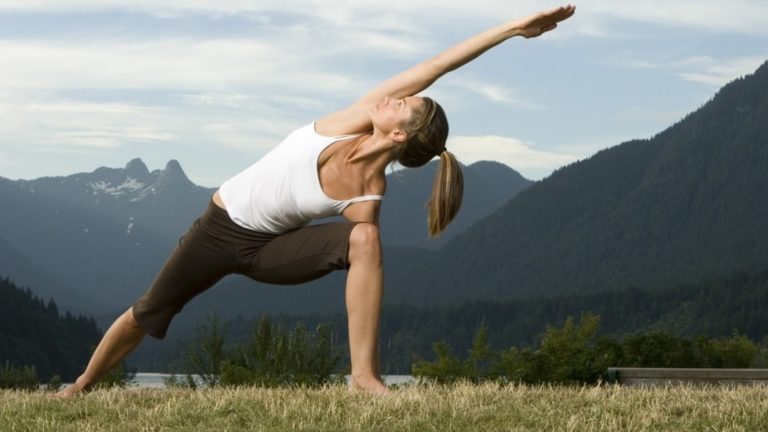
Many Yoga poses and flows involve large movements at the shoulder joint. Some of these movements have the potential to create shoulder impingement when improper technique and movements line are applied. If this shoulder impingement continues over time, chronic injury can form leading to pain and dysfunction.
What is Shoulder Impingement?
Shoulder impingement is caused when the arm is lifted above the line of the shoulder. The head of the arm bone (humerus) lifts and rotates into a portion of the shoulder blade (acromion on the scapula). Covering the head of the arm bone are the 4 rotator cuff muscles: the supraspinatus, the infraspinatus, the subscapularis, and the teres minor. Acting as cushioning against pressure and friction, there are bursa sacs that lie between the muscular capsule and the acromion.
When the arm is lifted high over the level of the shoulder, the head of the humerus presses into the acromion. This pressure and friction can develop into inflammation of the bursa (bursitis) or the tendons the muscles (tendonitis). This inflammation can worsen due to repeated impinging actions that can eventually lead to increased pain and limited movement.
Where can Shoulder Impingement Occur in a Yoga Practice?
Shoulder impingement can occur in variety of Yoga postures and flows. Here is list of common yoga postures that set the arm bone above the line of the shoulder and can generate damaging frictional forces in the shoulder joint if one is not mindful:
- Sun Salutations – the motion of folding into Mountain Pose (Tadasana) into Standing Forward Bend (Uttanasana) often incorporates a large sweeping motion of the arms over the head.
- Extended Side Angle Pose (Parsvottanasana)
- Extended arms in Child’s Pose (Balasana)
- Half Moon Side Stretch Pose (Ardha Chandrasana)
- Gate Pose (Parighasana)
How to Reduce the Incidence of Shoulder Impingement in Yoga Poses
The first method in reducing the pressure caused by shoulder impingement is to eliminate arms transitions that move the arm bone through large sweeping motions. In Sun Salutations, consider keeping arms in the forward plane, instead of lifting arms out to the side, back, up and then over head. By lifting the arms forward instead, there is less pressure being created against the head of the humerus as the arm bone moves back and up.
The greatest amount of pressure tends to occur where the arm is situated high above the shoulder line with the arm bone back in line with the neck and the arm bone rotated internally (medially) so the palm faces forward.
If the yoga posture requires the arm to be overhead and in line with the neck (like Extended Side Angle Pose), take extra note of the position of the hand. The hand should be turned inwards towards the body creating an external rotation of the arm bone. This external rotation has a tendency to draw the head of the humerus down from the acromion and scapular structures. This outward rotation of the arm bone offers secondary benefits as it encourages the shoulder blades to draw down away from the ears, thus bringing more integrity to the shoulder girdle and freedom to the trapezius and neck regions.
If you are ever experiencing regular pain in the shoulders, consult a health care professional to have your condition properly diagnosed and treated. Continue to acknowledge that Yoga poses are a means to create expansion and vitality. With mindful alignment and awareness to joint positioning, you can maintain space and energy flow through the shoulders and readily avoid impinging movements.
Yoga Breathwork for Quick Sinus Relief
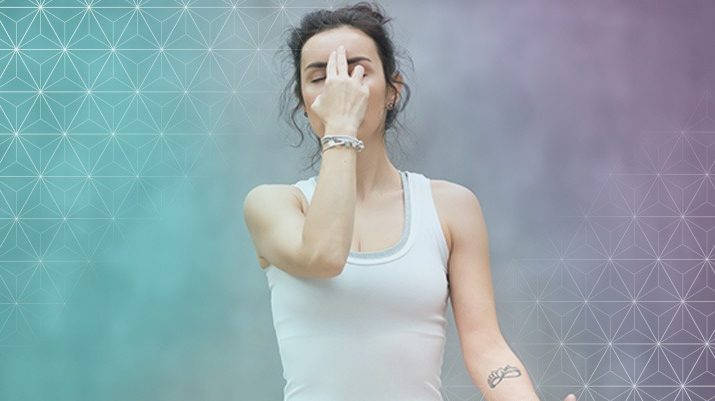
4 Minute Pranayama Kapalbhati Breathing Tutorial
Though it may seem counter-intuitive, breathing is another practice that can alleviate sinus discomfort. Try the following practices with a calm and relaxed demeanor, focusing on keeping your prana moving smoothly. You may wish to blow your nose, or better yet, use your neti pot before you try these exercises.
Belly Breathing
Lie on your back with your knees bent and your hands on your belly. Breathe deeply into the belly, focusing on expanding the belly like a buddha, then draw the breath and energy up through your ribs, chest and shoulders. Exhale the same way, deflating your belly, chest and shoulders, and squeezing all the air out of your belly. Find your own rhythm.
Calming Breath
Sit comfortably. Bring your right hand out in front of you, palm facing you. Fold your index and middle fingers into the palm. Place your ring finger on your left nostril to close it off. Breathe into the right nostril for two counts. Close off the right nostril with the thumb and hold the breath for two counts. Release the left nostril, exhale for two counts. Close off the left nostril and hold the breath for two counts. Try visualizing a square. If it feels uncomfortable to hold the breath, simply pause instead. Increase the count as you become comfortable, making sure that you are doing equal counts for each action.
Breath of Fire
In this practice, hold your hand over your navel, and practice forcefully exhaling out the nose repeatedly. Your belly should be pumping in and out. The force of the exhale will naturally draw in a new breath, so there is no need to inhale consciously. You may start this practice by gently panting, but it is important to eventually speed up the pace of this breath in order to stoke the “fire” of the breath.




